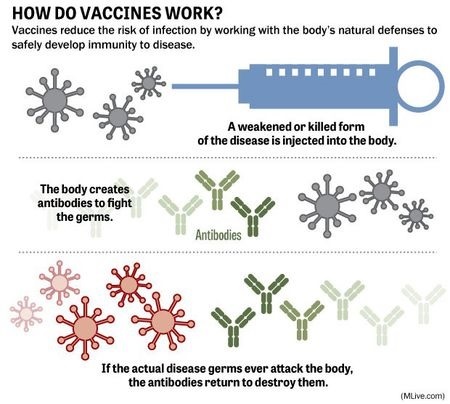Vaccine: A vaccine is a biological agent that prevents us from an infectious disease-causing pathogen such as a virus, bacteria or parasite. It guides the body on defending itself against the pathogen attack by generating an immune response. Usually, it is administered in our body in liquid form, either by injection, by oral doses, or by intranasal routes.
How vaccines work: A disease-causing organism can cause two types of responses in our body. The first can be seen as symptoms such as fever, nausea, vomiting, diarrhoea, rash etc. which we experience initially. The second is the immune system’s response to the infection. Over time the strength of immune system increases, which in turn reduces the number of infectious agents and slowly the symptoms disappear.
Vaccines are composed of either the entire disease-causing microorganism or some of its components in non-pathogenic form which imitate the second type of response without the consequences of the first. The following steps summarize how a preventive vaccine can protect an individual from infection or disease:
1. The vaccine introduces a small component or a non-harmful form of the pathogen into the body. This is called the foreign antigen or immunogen.
2. The body’s immune system produces an immune response to the pathogen by generating antibodies, killer cells, or both.
3. A small group of “memory” B-cells and T-cells remain in the body and can quickly initiate a strong immune response, i.e., by producing antibodies, and helping the production of killer T-cells or antibodies, respectively. The next time the real pathogen enters the body, the immune system remembers it and mounts a much larger, quicker response than it would have if the individual had never received the vaccine.
